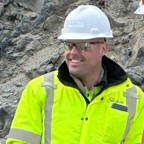Conference panels
Conference panels
Overview: A Critical Thinking Expedition
Have you ever wondered how many decisions go into a resource estimate and which ones are the most critical? The models and estimates that underpin the minerals industry are constructions, based on multiple judgements, by people. Which means that our models and estimates are a reflection of our unique skills, knowledge, expertise and flaws. It is this aspect of resource estimation that the Parker Challenge is examining. How do the differences we bring to our professional practice affect the results we produce? How different can an estimate be when the only difference is the person or team responsible for the estimate?
This year’s Parker Challenge focuses on critical thinking. In a complex geological setting, with a positively skewed gold distribution, what are the different pathways toward modelling and estimation?
The deposit is referred to as ‘Enterprise’ for the intent and purpose of the Parker Challenge. It is one deposit of several that make up a multi-million-ounce complex located in the northern Carlin Trend in Nevada. Participants received a limited data set, comparable to what would typically be available for an interim Mineral Resource estimate in a production environment. A current production model exists that utilises all data to the present day, and this was used as a reference model for judging. However, the Parker Challenge Committee recognise that even this model, that uses significantly more data, is not a definitive model.
Did most of the participants choose to build foundational Carlin focused geological considerations into their models including the unique controls related to the relationship between structure and lithology, or did they opt to demonstrate a quicker, more streamlined approach; and does this provide less a less accurate result?
There is plenty of high grade but there is an awful lot of economic low grade as well, how did the participants approach selectivity in the high v the low grade areas?
The dataset contains dense underground drilling, sparse peripheral drilling and even some blast hole sampling, all of which contains economic grades. How did the participants chosen modelling methods work in the different configurations?
Lets find out!
Panellists

Danny Kentwell

Mark Roux

Jesse Clark

Ana Chiquini

Mike Stewart

Clint Ward

Kathleen Body
#MREC2025 is now sold out!
Tickets for MREC have been exhausted. Wait list now to be first to know if additional capacity can be confirmed.
Check out the other panels
Panel. Software Future Challenge
Panel. Myth Busting
Why do we still not agree on things that have been studied (and often ‘solved’!) for decades? Why, even at the highest levels of practice, do we still debate what is best practice?
Panel. The Future of Resource Estimation
Exploring how innovation, AI, and workforce evolution are reshaping the future of resource estimation, from emerging tech to the people behind the models.
